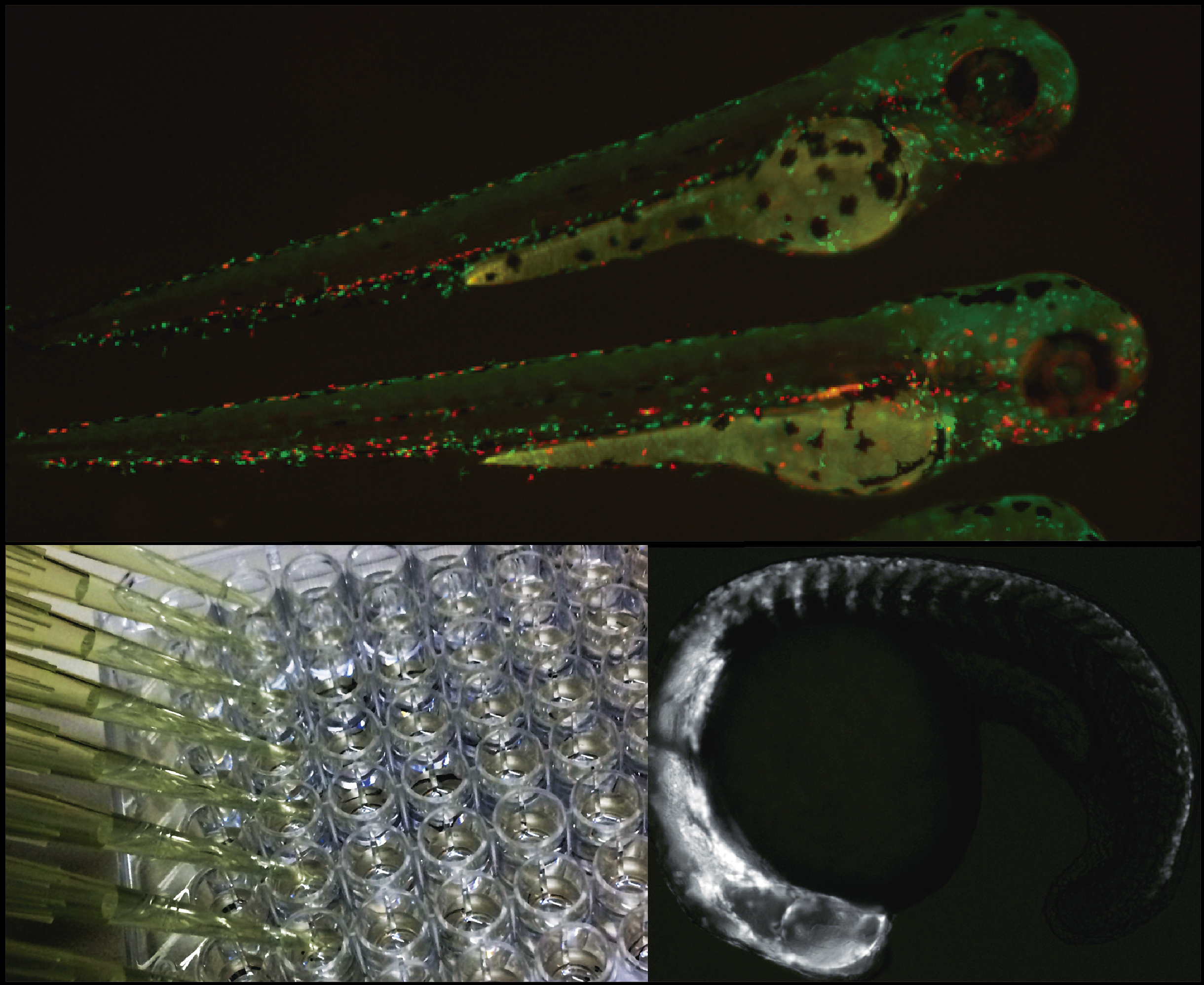Zebra fish has become the “lab mice” in basic and applied sciences. This is evidenced in the growing number of universities and businesses around the world that have been implementing zebra fish breeding facilities in the last decades. This explosive interest in this model comes from the fact that it provides multiple advantages in scientific research in various areas such as genetics and embryonic development, toxicology and teratology, biomedicine, the discovery of new drugs and the modeling of diseases, among others.
Some of the most remarkable advantages this model provides are:
- Transparency of embryos
- Large progeny all year round
- Highly conserved genetics with humans
- Small size and easy maintenance in lab conditions
- Fast embryonic development and a short generational time
The applications for this model are practically infinite and our vast experience with it gives us the tools necessary to design custom-made protocols according to the needs of each project or research.

